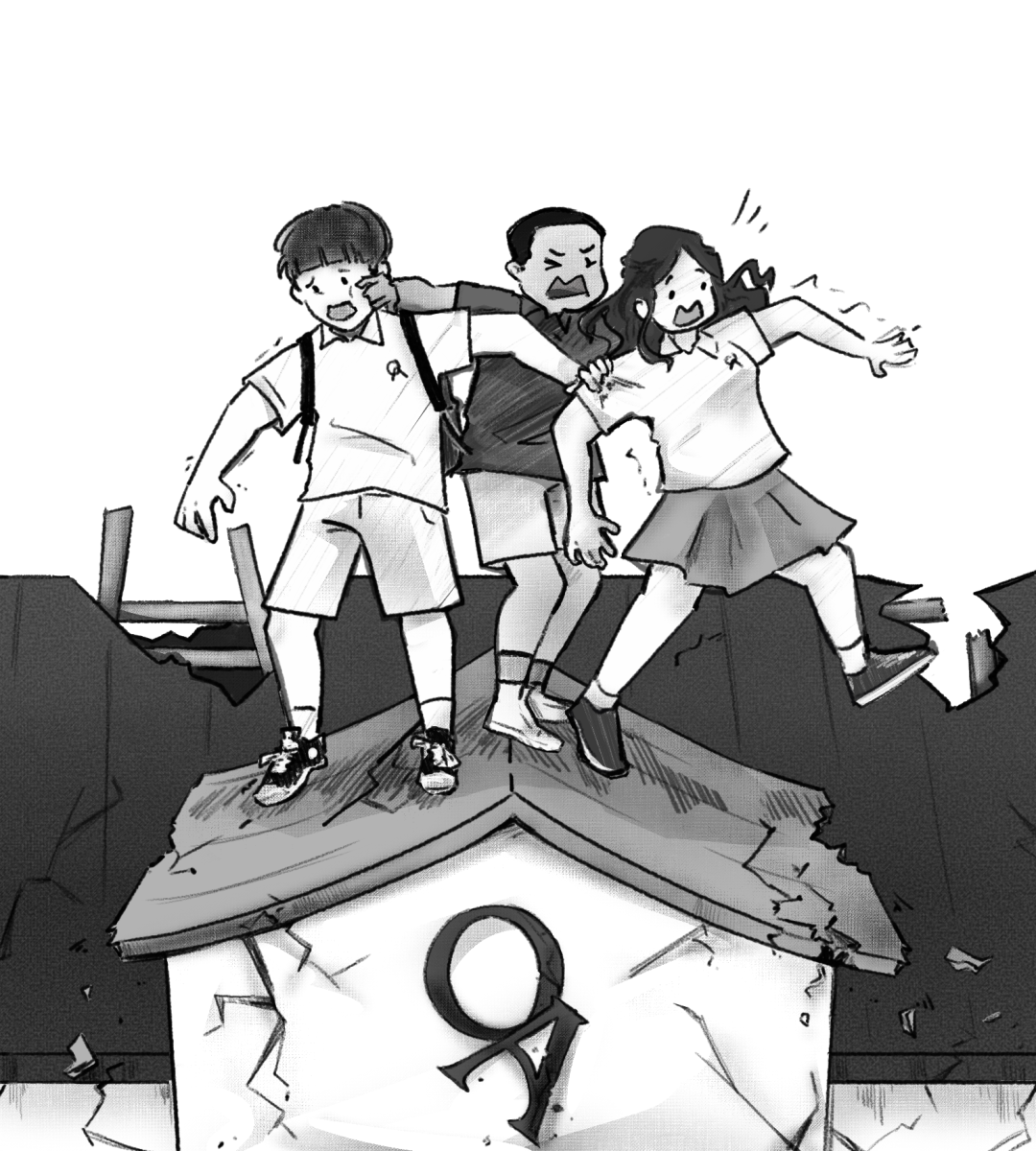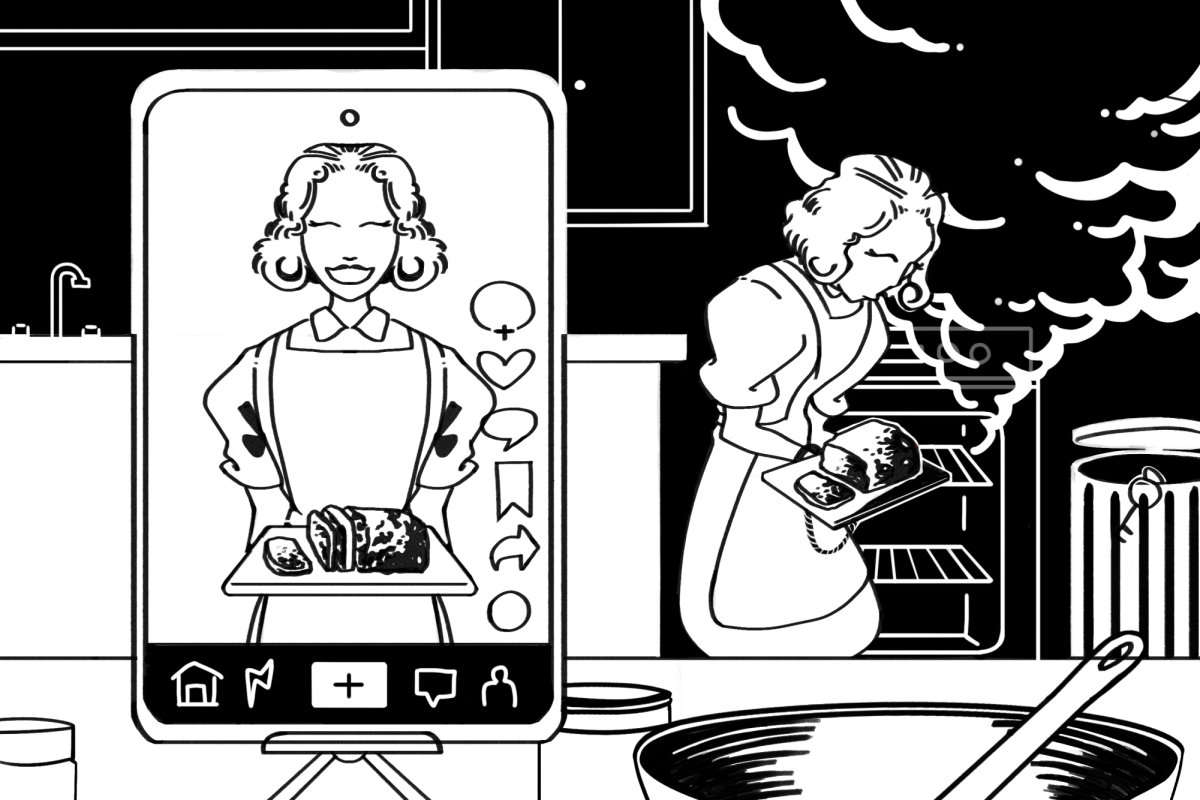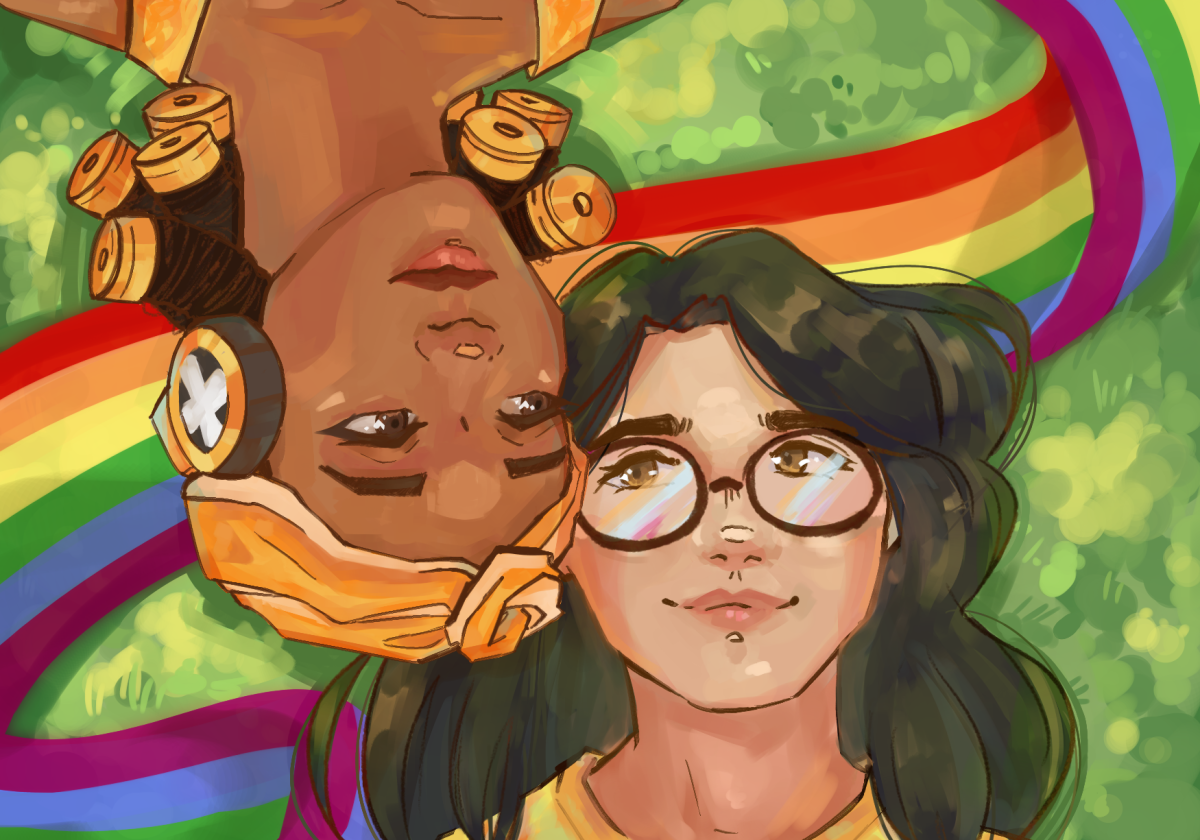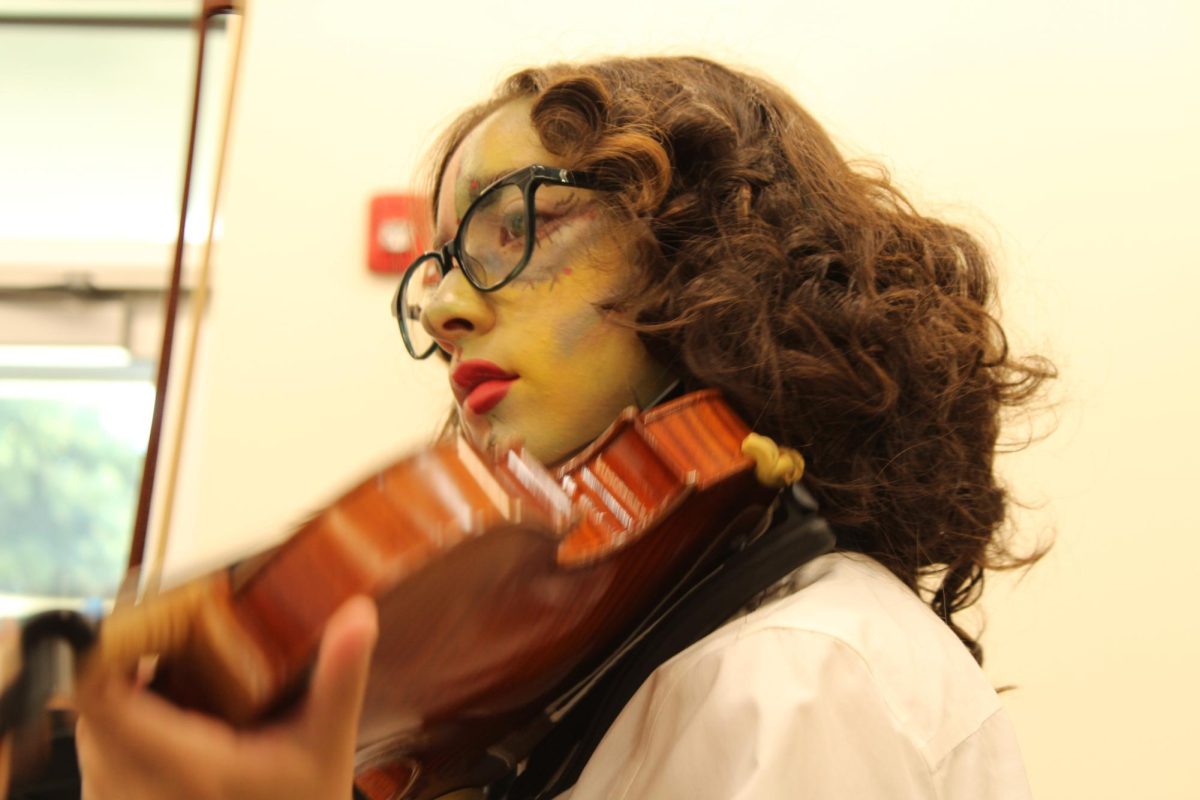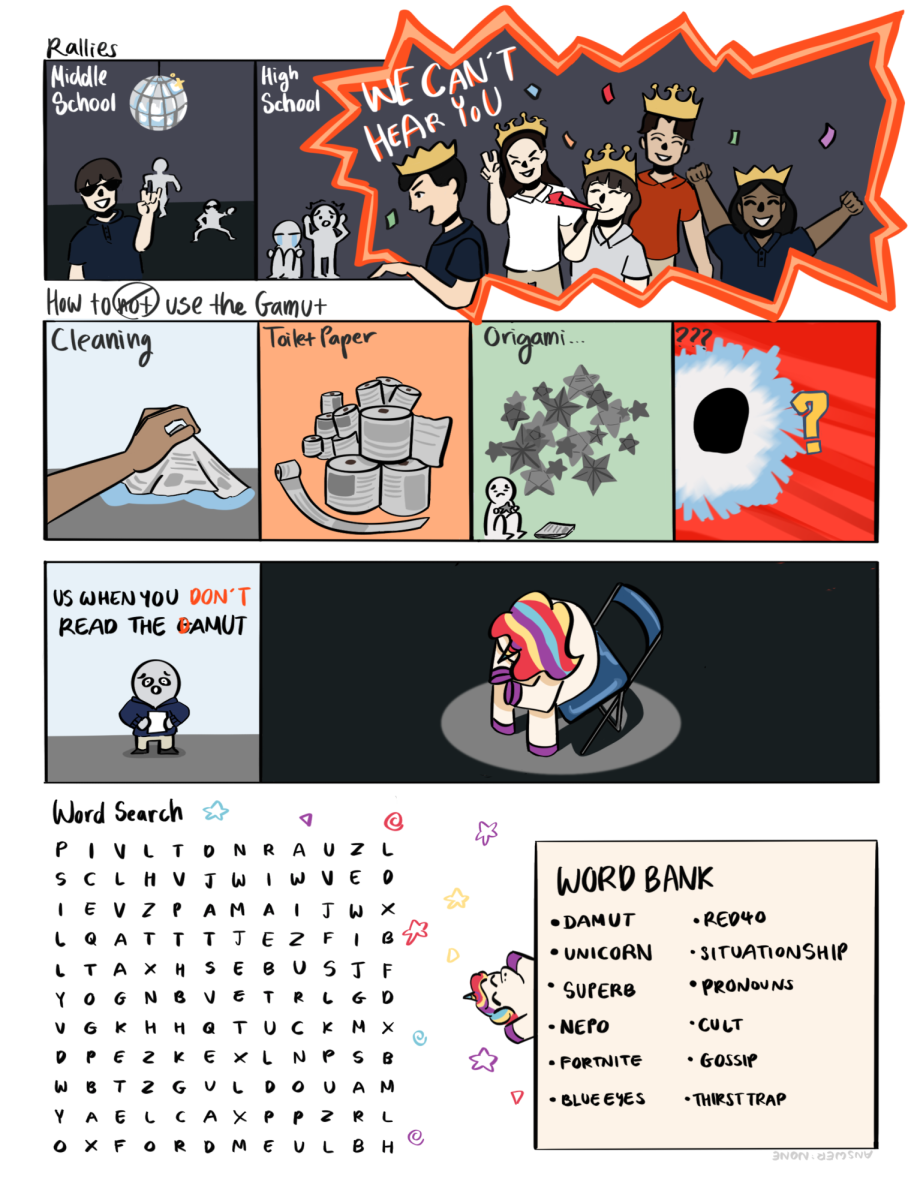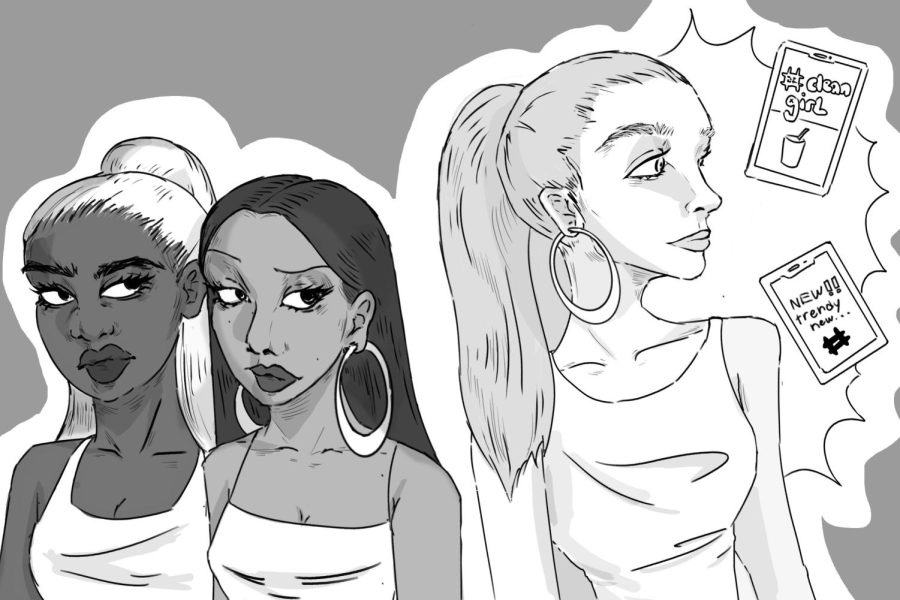Slick-back buns, gold hoops, brown lined lips with a glossy top coat. On a woman of color (WOC), this look is “gangster” or “trashy,” but on a White woman, this is the “clean-girl” aesthetic that has taken social media by storm.
Hailey Bieber caused a huge internet frenzy after posting a Tik Tok of her lining her lips with dark brown lip liner, topping it off with a clear gloss. She captioned the post: “the lip combo vibe I’m feeling for fall,” and later posted a separate video calling this lip combo the “brownie glazed lips,” causing a huge uproar within the Latinx and Black communities. This look directly copies the popular “Chola” lip look.
The trend originated at the height of the “color-block” look that dominated the 90s. Women of color realized that the frosted baby blue and bright red color scheme didn’t compliment their skin tones as much as it did for White women. They decided to make do with what they had, and WOC created arguably the most universal lip combo of the late 80s to 90s using drugstore eyebrow pencils and clear glosses.
Much like Hailey Bieber’s fall combo fiasco, White superstars have tried the trend without much credit to Latinx and Black females.
The “Chola” or “gangster” stereotype (baggy clothes, big gold hoops, thin eyebrows, and overlined pale lips), took over the lives of most Chicana (Mexican-American women) from low-income urban cities. Big hoops were a staple in Chicana fashion as they were one of their most iconic jewelry pieces. Recently, White women on TikTok have been wearing these exact same hoops, unintentionally bringing light to the double standards that society has set for beauty trends.
Oxford freshman Giselle Lopez said, “White women dominated society to think that in order to be a professional woman you have to have straight hair, and small classy jewelry but they have now whitewashed and claim this style as an ‘aesthetic’ that they don’t get judged for, but instead get praised for.”
With all of the backlash that “clean girl” has received, it has also brought trends that were copied from WOC to reveal the cultural appropriation related to these “trends.”
New hashtags such as #blackcleangirl and #chicananotclean have begun to surface on the internet, taking back the culture stolen from WOC by posting pictures of their mothers utilizing these trends during their peak using these hashtags.
It’s not too late for white women to turn their cultural appropriation into appreciation, however. White women wearing lip liner or jewelry isn’t the problem; it’s the lack of credit given to WOC for the “aesthetic.” A way for influencers today to pick up the trend without controversy is to give credit to the WOC that came before them and their cultures.
Trend after trend, we see repeats of previous looks with no credit to their cultural origins. As with the “clean-girl” aesthetic, women of color have faced discrimination over their looks but recieved none of the credit when the trend becomes acceptable.









